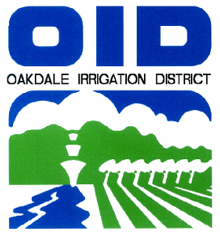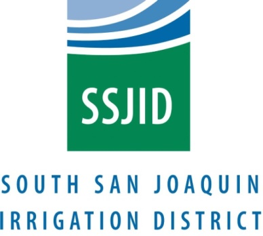Today, the state announced its plan to unfairly take 350,000 acre-feet of water a year – enough to serve 1 million families — from three Central California rivers all with the purported purpose of benefiting river habitat and fish populations. The Oakdale and South San Joaquin irrigation districts stand united with a coalition of public agencies, private organizations and valley residents who strongly oppose this misguided plan.The State Water Resources Control Board’s plan to increase flows in the Stanislaus, Tuolumne and Merced rivers represents the worst kind of government overreach. The plan took 10 years to conceive at a cost of $70 million.
The state first indicated its intent in 2009 to increase river flows as part of Phase 1 of its Bay-Delta Water Quality Control Plan. Since then, state officials have largely failed to listen to regional water experts, legislators and local government officials, farm bureaus, business leaders, educators and others who requested open discussion of the plan.
“Not a single public meeting ever was held in San Joaquin, Stanislaus or Merced counties. In addition, these plans fail to consider new science that is pointing to holistic approaches to addressing multiple stressors that affect fish populations, not just flow,” said Oakdale Irrigation District General Manager Steve Knell.
The Districts believe the state’s plan fails on multiple levels:
- Agriculture is the foundation of our regional economy. In 2014, it was worth more than
$8.5 billion in San Joaquin, Stanislaus and Merced counties. The current SWB plan estimates that a 40% unimpaired flow requirement is projected to result in an average annual decrease in economic output of $64 million. Its previous plan estimated that up to 240,000 acres in those counties will be fallowed. The SWB plan provides no mitigation. - The SWB previous plan estimated 2,000 to 3,000 jobs will be lost not only on farms, but in food processing, trucking and other industries that are intertwined with agriculture. We fear the updated number will be even higher. That is especially bad in an area where unemployment already exceeds the state average. The SWB plan provides no mitigation.
- Through this recent drought, CA has attempted to address statewide groundwater issues through the passage of the landmark Sustainable Groundwater Management Act in 2014. The single biggest tool in the toolbox for addressing local groundwater overdraft is surface water. Diverting 350,000 acre-feet or more annually in surface water from our farmers will leave them with two bad choices – to fallow their orchards and fields, or to pump more groundwater from already stressed aquifers. The SWB seeks to negatively impact the groundwater situation for the central valley AND take away the solution at the same time. Both SSJID and OID have been taking substantive steps to conserve water with creative solutions for years, along with investing in fish habitat improvement projects. The water conservation steps done in partnership with the districts’ growers have also assisted with improving groundwater levels as much as possible in their territories and have helped their agricultural growers continue to produce successful crops with less water. Increased flows without accurate scientific knowledge backing these flow requirements do not take into account the proactive water conservation and fish habitat improvements that these two districts have taken seriously for years.
- The question OID and SSJID have asked the SWB from the beginning is, “What quantitative benefit will there be to the fishery?” The SWB plan provides no answer.
- The recent OID/SSJID rainbow trout survey report on the Stanislaus River shows releasing too much water in the spring – especially during a drought – diminishes the cold water stored in upstream reservoirs that trout need to successfully spawn later in the year. The SWB plan ignores more than two decades of scientific research on the river that clearly shows more water does not equal more fish.
- The state refuses to acknowledge that taking billions of gallons a year more water from the three rivers is not somehow connected to Gov. Jerry Brown’s desire to build the Twin Tunnels under the Delta. What we know is that the impacts of each of these state projects in the Delta have not been collectively evaluated. That’s against the law. Without a collective analysis, there is no certainty that our region’s residents will not unfairly bear the brunt of an unwarranted and unprecedented water grab to “fix” the Delta and provide more water to Southern California.
- The SWB plan provides no explanation to our farmers, communities, businesses and residents about the economic and environmental devastation it will cause because an additional 100,000 acre-feet a year will be diverted from the Stanislaus River, the watershed that provides OID and SSJID farmers with their irrigation water. We have a right to know how the state potentially benefits. Again, the SWB plan is silent.
“The State Water Board needs to rethink its plan. We again request that state officials engage in constructive public discussions to modify the proposal and to identify ways to mitigate the significant impacts identified in their plan,” said Peter Rietkerk, general manager of South San Joaquin Irrigation District. “We ask the state to extend its 45-day public comment period to at least 90 days so that farmers and others involved in agriculture’s ongoing harvest have time to analyze and participate in developing responses to the impacts of the plan. We also ask the SWB to hold public hearings in San Joaquin, Stanislaus and Merced counties so that the locally affected residents can be heard and have their input seriously considered.”
About Us: The South San Joaquin Irrigation District was established in 1909 and is located in Manteca. It provides agricultural irrigation water to about 55,000 acres in Escalon, Ripon, and Manteca. In 2005, the district expanded into providing domestic water service to selected cities within its territory. The Oakdale Irrigation District was created in 1909 and provides agricultural water to about 62,000 acres in northeastern Stanislaus County and southeastern San Joaquin County.
OID and SSJID hold senior water rights on the Stanislaus River. For more than 100 years, our agencies have responsibly delivered surface water to farms in San Joaquin and Stanislaus counties, and for SSJID, thousands of homes in San Joaquin County. We are committed to sensible water policies, innovative irrigation techniques, prudent conservation practices, and important investments in biological studies of the river and fish habitat.
Save the Stan is a public education effort by SSJID and OID to inform Californians about the threat posed by increased flows on the Stanislaus River. For more information, go to www.savethestan.org or our Facebook page.

Steve Knell, OID general manager, (209) 840-5508 or srknell@oakdaleirrigation.com

Peter Rietkerk, SSJID general manager, (209) 249-4645 or prietkerk@ssjid.com
